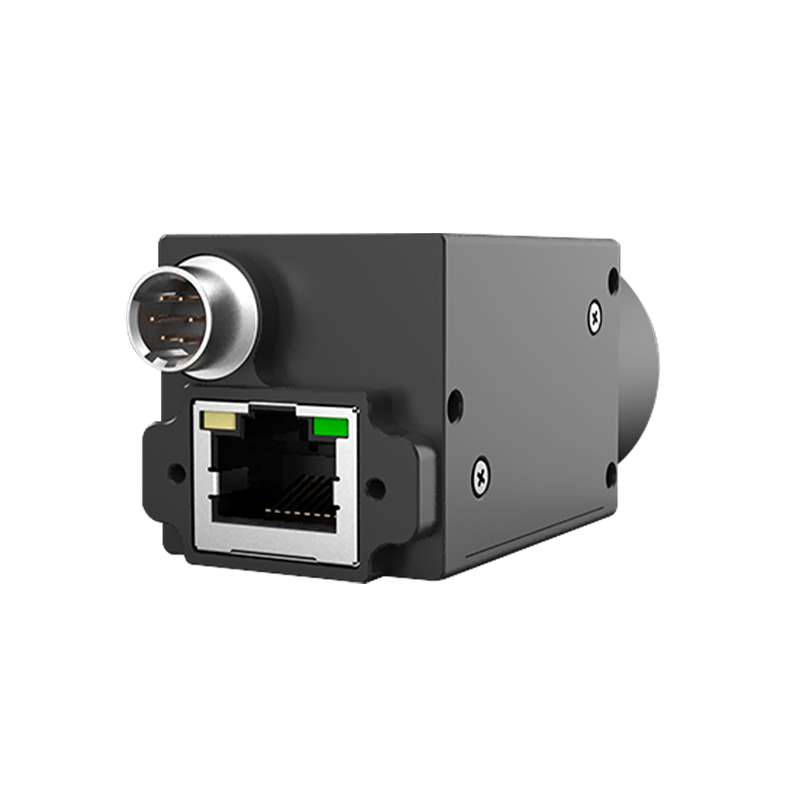The Impact of Sensor Resolution on Machine Vision Camera Performance
Understanding Sensor Resolution in Machine Vision
Pixel Density and Detail Capture
Pixel density refers to the number of pixels per unit area in a camera sensor, directly impacting the level of detail that the image can capture. Higher pixel density allows for finer detail capture, making it essential for accuracy in analysis and measurement. For instance, in electronics manufacturing, inspection systems leverage high pixel density to detect minute defects on circuit boards. Cameras with advanced sensor technologies exemplify this, incorporating sensors that ensure superior detail capture for machine vision tasks. For instance, CMOS sensors in high-speed cameras are often employed to achieve both high pixel density and rapid processing for industrial settings.
Resolution vs. Field of View Trade-offs
Understanding the trade-off between resolution and field of view (FoV) is crucial in camera applications. Field of view refers to the area visible through the camera lens, which is inversely affected by increasing resolution. While higher resolution enhances image detail, it can reduce the FoV, impacting the overall vision system's coverage in environments needing both aspects, like 3D cameras in automotive assembly lines. Operators must balance these trade-offs to ensure effective coverage and detail capture. Expert opinions and data suggest that strategic FoV and resolution management can optimize outcomes in industrial setups, facilitating tasks like machine vision lighting and 3D model construction with precision.
High Resolution for Precision Measurement
High resolution is crucial in precision measurement applications, significantly enhancing quality control in manufacturing processes. For industries like aerospace and automotive, where accuracy is paramount, high-resolution sensors allow for meticulous detail capture, leading to improved outcomes. For instance, high-resolution cameras can detect surface anomalies down to 1.5 micrometers, as noted in a Fraunhofer Institute technical paper. This capability enables industries to achieve higher precision levels, ultimately resulting in better defect detection and analysis. Furthermore, case studies have shown that the use of high-resolution sensors can vastly improve measurement accuracy, ensuring that even the smallest defects do not go unnoticed.
Data Handling Challenges in High-Speed Systems
The integration of high-resolution imaging within high-speed machine vision systems introduces significant data handling challenges. The increased data size from high-resolution images can strain storage capacities, bandwidth, and processing speeds, requiring robust solutions for efficient data management. For instance, USB 3.2 interfaces have been cherished in the industry for their ability to streamline speed and scalability, thereby accommodating higher-resolution sensors. Advanced data compression techniques and faster processing chips are being developed to optimize data throughput, allowing real-time analytics without compromising system performance. Industry trends indicate a clear shift towards these efficient data-handling solutions, propelled by the demand for faster and more accurate machine vision operations in sectors like automotive and consumer electronics.
Automotive Quality Control Demands
In the automotive industry, high-resolution machine vision systems are essential for stringent quality control measures. Various components such as paint finishes, metal surfaces, and electronic assemblies necessitate specific resolution levels to detect defects accurately. For instance, next-generation driver-assistance modules greatly benefit from clarity offered by cameras exceeding 25 megapixels, which enables reliable sensor fusion and precise defect detection. In 2023, a major European automaker installed 900 new 3D vision cameras on engine and body assembly lines to reduce defect rates, showcasing a successful implementation of high-resolution cameras. Industry statistics consistently indicate that enhanced resolution delivers better defect detection rates, thus ensuring higher quality standards in manufacturing.
3D Camera Systems for Depth Analysis
3D camera systems fundamentally rely on high resolution to accurately analyze depth in various industrial applications. Industries like construction, robotics, and virtual reality find immense value in 3D imaging for tasks requiring precise measurements and spatial understanding. The accuracy of resolutions enables detailed 3D modeling, thereby impacting sectors like automotive manufacturing, where surface anomalies down to 1.5 micrometers can be detected, as demonstrated in Fraunhofer Institute's publication. With advancements in 3D camera technologies, such as stereo vision and time-of-flight sensors, these systems continually improve in resolving fine depth details, thus enhancing capabilities in creating intricate 3D structures. These innovations significantly contribute to machine vision's expanding application in complex industrial environments, facilitating robust automation solutions.
Featured Machine Vision Cameras: Resolution Capabilities Compared
MV-134GC-GE/M: 1.3MP Global Shutter Performance
The MV-134GC-GE/M camera stands out with its 1.3MP global shutter, which plays a crucial role in preventing motion artifacts. Global shutter technology is revered in applications where rapid movements must be captured without distortion—a common need in high-speed inspections and robotics. Whether in automotive assembly lines or packing stations, the MV-134GC-GE/M's ability to capture precise images at high speeds ensures superior resolution performance. Comparing this model with others reveals its edge: the global shutter's ability to manage image clarity in dynamic environments surpasses the offerings of many similar models.
MV-1000RC-GE/M: 10MP Rolling Shutter Flexibility
The MV-1000RC-GE/M camera is marked by its impressive 10MP resolution paired with rolling shutter technology, giving it a unique flexibility in applications that require high detail but can accommodate some motion distortions. This camera is valuable in scenarios such as static inspection lines or areas where high-resolution imagery is essential without the fast-moving components. Its high pixel count allows for detailed scrutiny, and when compared with global shutter models, it provides a cost-effective option for non-dynamic environments.
MV-D200C-GE/M: CCD Sensor Advantages
The MV-D200C-GE/M camera highlights the advantages of CCD sensor technology, particularly in delivering high image quality and superior light sensitivity, thus enhancing overall resolution. CCD sensors are known for their excellent noise performance, making the MV-D200C-GE/M ideal for low-light conditions or scenarios requiring precise color fidelity, such as medical imaging or quality control in automotive paint finish inspections. When benchmarked against others, CCD technology's ability to maintain detail and clarity under varying lighting conditions stands out, making it distinctly favorable for applications where image quality is non-negotiable.
Balancing Resolution with System Constraints
Frame Rate Considerations for High-Speed Camera Use
In high-speed applications, the interplay between camera resolution and frame rate is crucial. Higher resolutions typically demand more data processing, which can lower frame rates—the number of frames a camera can capture per second. Industries like sports, where minute details need capturing without sacrificing real-time monitoring, must balance these two factors. For instance, a high-speed camera used in sports analysis might reduce resolution to achieve faster frame rates, ensuring no critical action is missed. Technical advancements in camera technology often allow customization of these settings to meet specific industrial needs. Frame rates such as 300 fps at Full HD resolution are standard in tasks requiring both detail and speed.
Machine Vision Lighting Optimization Techniques
Lighting is integral to enhancing image quality in machine vision applications. Utilizing proper lighting techniques, such as dome lights and bar lights, can significantly improve the resolution clarity of captured images. Dome lights distribute light evenly, reducing shadows, while bar lights provide focused illumination, improving detail capture. These techniques must be balanced with the camera's resolution to avoid overexposure or unintended effects. Successful case studies, such as those in automotive inspection, show how strategic lighting setups can uncover defects that might remain hidden at lower resolutions. The use of these approaches ensures maximum image clarity, aiding in precise and reliable monitoring.




